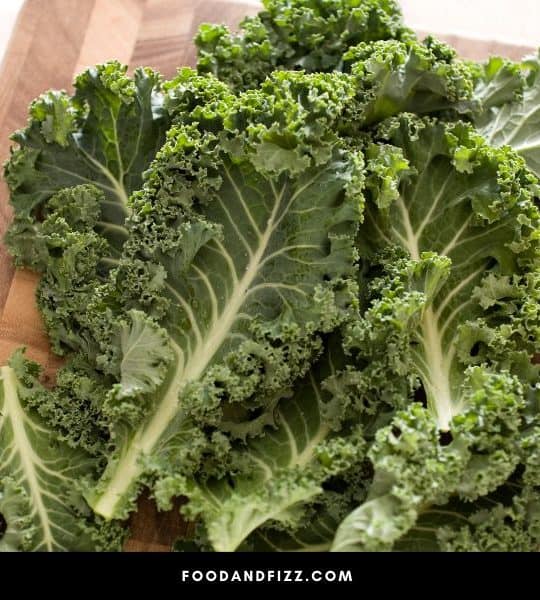Dried kales are probably some of the most nutritious vegetables you could ever eat. Kale contains potassium, antioxidants, fiber, and Vitamins A, B, and C, which are vital in the body’s functioning.
Aside from this, dried kale lasts longer than fresh kale. That means you can store them longer and still enjoy them as if they were fresh.
How Many Kale Leaves Are In A Cup?
A single large chopped kale leaf is equivalent to one cup. If the leaves are of medium size, it is more likely that one will require two leaves to fill a single cup. Again, if you choose to dry the kales and then crush them into powdered form, it will take approximately five big leaves to fill a single cup. As such, the number of kale leaves in a cup depends on whether the kales are chopped or powdered.
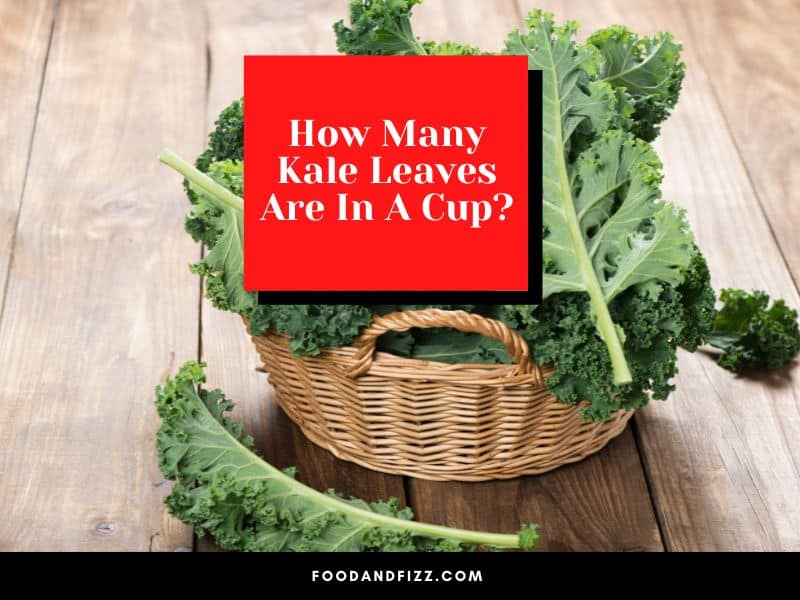
How Much Is One Kale Leaf In Grams?
The weight of a kale leaf will depend on several factors. That’s because the leaves could vary in several ways, impacting how they weigh. Here are some reasons why kale leaves have different weights in grams.
- Size: A big leaf will definitely have a massive weight in grams compared to a medium-size or small-size kale leaf.
- Freshness or Dryness: Whether a kale leaf is fresh or dry will hugely impact the weight. Dry leaves measure lighter because they have lost water compared to freshly plucked leaves.
- Whole or Chopped: Chopped kales appear lighter than the unchopped kale leaf. The weight is probably because some water is lost when the kale is cut. It could also result from the airspaces between the chopped kales.
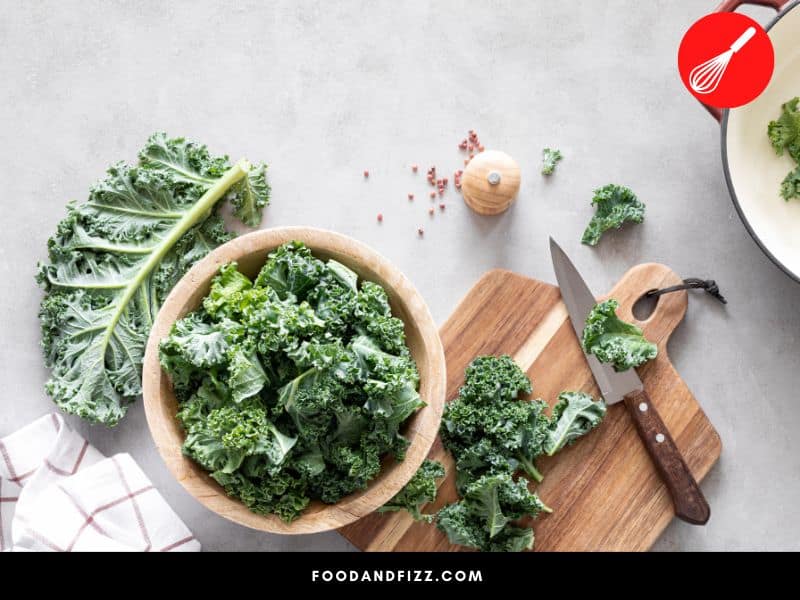
So, with all three factors considered, it is unlikely we’ll be able to predict the exact weight of a kale leaf in grams. However, here are some estimations we can make based on the above factors.
- A large kale leaf weighs about 72 grams. However, the weight could vary depending on size, with small leaves weighing as low as 45 grams.
- A kale leaf loses up to 70% weight when dried. As such, a fresh kale leaf weighing 72 grams could weigh 21.6 grams.
- When chopped, a whole kale leaf could lose approximately 6.5% of its weight. Therefore, a kale leaf weighing 72 grams could have a net weight of 67.32 grams when chopped.
How Many Kale Leaves Makes Up a Cup?
The number of kale leaves in a cup depends on the abovementioned factors. However, considering that an average fresh kale leaf weighs approximately 58 grams, it is possible to estimate how many leaves comprise a cup. Nevertheless, that will also depend on whether the leaf is whole, chopped, cooked, dried, or powdered.
- A cup of chopped cooked kales weighs about 67 grams.
- A cup of chopped uncooked kales weighs about 50 grams.
- A cup of raw unchopped leaf weighs approximately 80 grams.
- A cup of uncooked dried and powdered kale weighs about 46 grams.
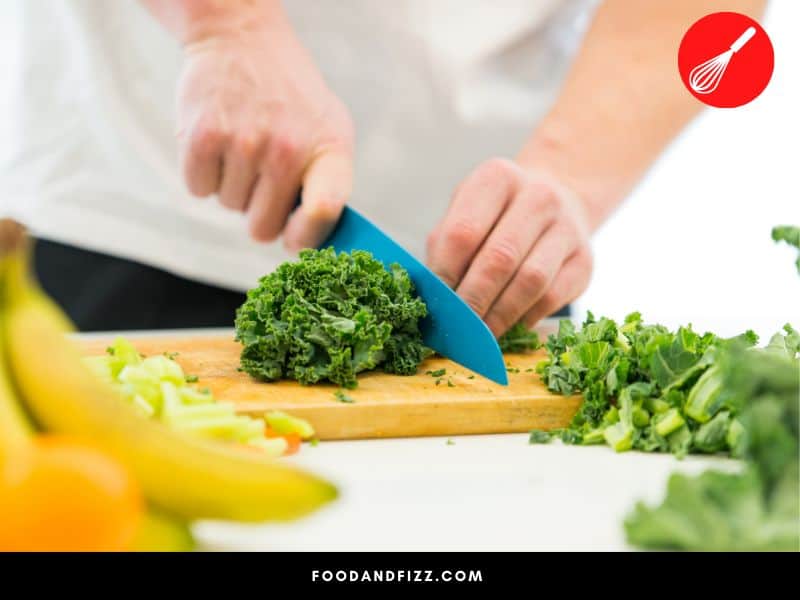
What is the Amount of Nutrients in a Cup of Kale?
A cup of chopped cooked kale weighs about 67 grams and has just the right amount of nutrients and minerals you may need from vegetables.
Kale contains potassium, vitamins, fiber, etc. Here is the amount of nutrients you could draw from a cup of kale in grams.
- Potassium – 170 mg
- Sodium – 18.9 mg
- Manganese – 0.6 mg
- Copper – 1.1 mcg
- Magnesium – 29.5 mg
- Iron – 1.0 mg
- Fiber – 4.5 g
- Energy 42.5 g
- Protein – 3.5 g
- Vitamins C – 21 g
- Vitamin E – 1.9 mg
- Vitamin A – 172 mcg
- Vitamin K – 494 mcg
- Beta Carotene – 2,040 mcg
- Zinc – 0.3 mg
- Sodium – 18.9 mg
- Phosphorous – 49.6 mg
The nutrients and minerals and many others are considered essential to the body.

How Many Cups of Kale Should I Eat Daily?
Although kales are nutritious and essential to the body, there is the right amount that one should eat. Overeating kale is just as worse as overindulging in any other food. Eating two to three cups of kale a day is recommended. However, it would be great to eat each cup at different times.
What Foods Go Well With Kale?
While you can eat kale alone without mixing them with anything else, it also works as an accompaniment to other food. There are numerous food items where you can use kale as an accompaniment and still enjoy them. Here are some of the best food choices where kale would be a great addition.
- Vegetables: Other than cooking or serving kales alone, adding some vegetables such as carrots and tomatoes would give it a better taste.
- Noodles: If you’re looking for an excellent accompaniment for those noodles you like, then kale is a good option. You can have two to three cups of kales, depending on the number of noodles.
- Meat and Potatoes: Kales are an excellent addition to a mixture of meat and potatoes. The recipe involves cooking the potatoes to tenderness and then adding the kales while continuing to cook. Finally, the already cooked meat is added, and the heating continues for about 20 minutes.
- Soups: Kale is a suitable addition to beans and vegetable soups.
- Fruits: Mixing kale with other fruits could be one of the healthiest foods. It can be added to smoothies, with things like bananas or berries.
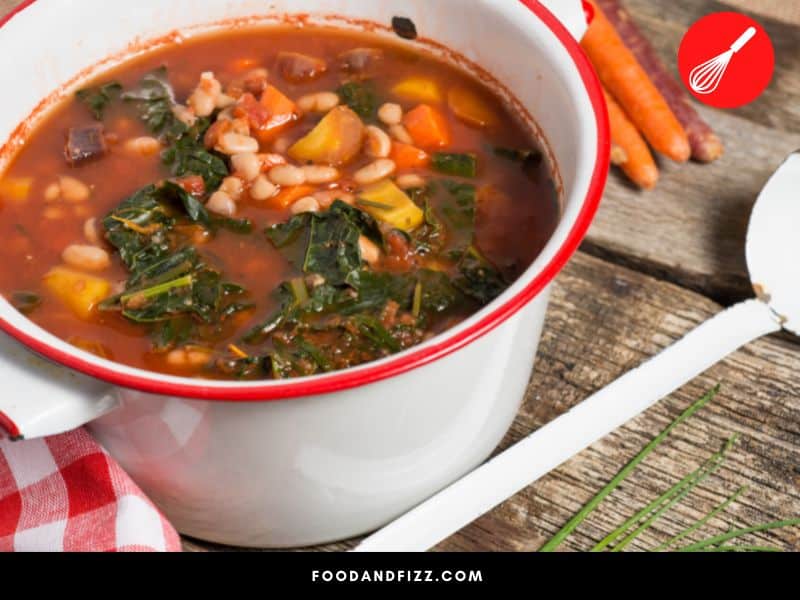
Frequently Asked Questions to How Many Kale Leaves Are In A Cup?
How Many Kale Cups Can I Eat in a Day?
Eating two to three cups of kale a day is recommended. Mixing them with other foods and at different times of the day makes it better.
How Can I Make Kale Powder?
Clean your kales thoroughly and then dry them for almost three days. Crush the dried kales using a mortar and pestle until they are smoothly powdered.
Can I Eat Uncooked Kales?
Kales are rich in nutrients and minerals and can be blended with fruits and vegetables to make smoothies. The drink is both sweet and healthy.
Conclusion to How Many Kale Leaves Are In A Cup?
How many kale leaves are in a cup depends largely on whether the leaves are chopped or powdered. In general, one large kale leaf may be equivalent to one cup, but if the leaves are smaller, as much as two leaves will make one cup.
If you use dried and powdered leaves, it can take as much as five leaves to fill a single cup.

